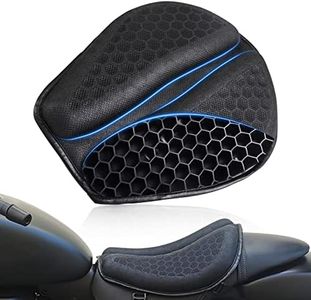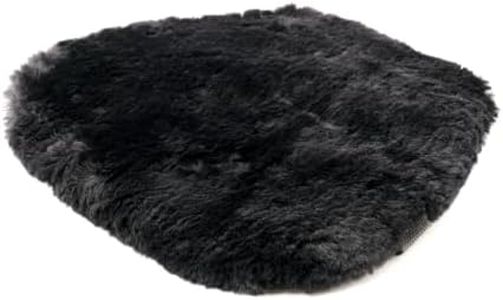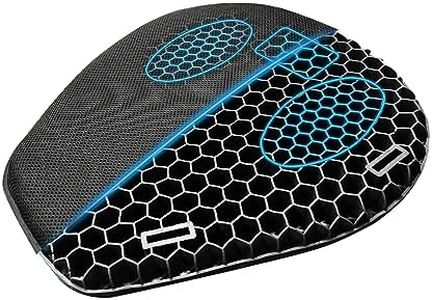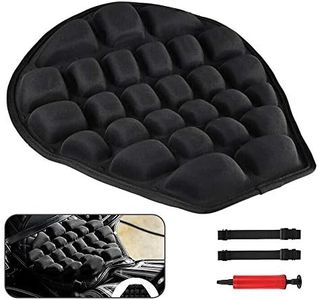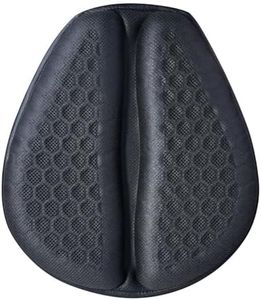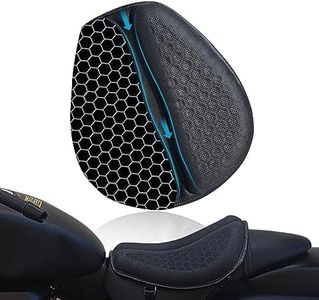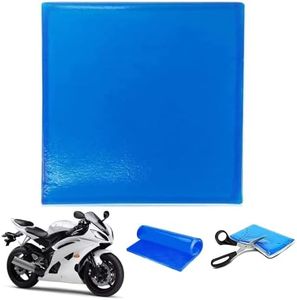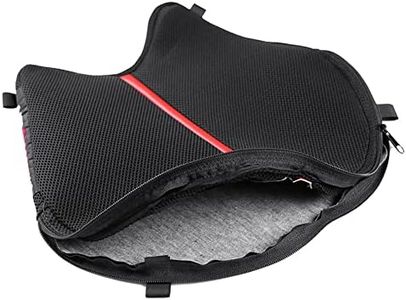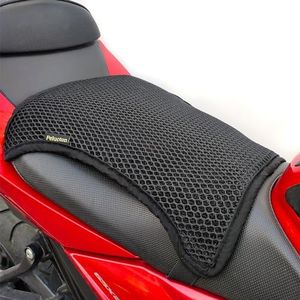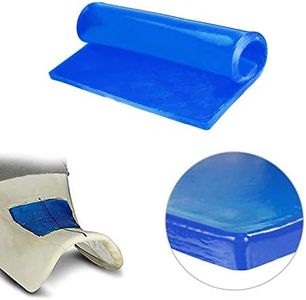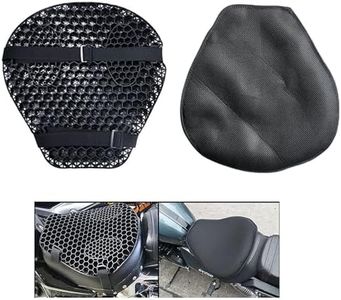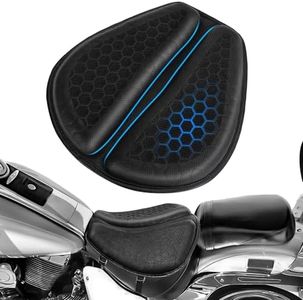We Use CookiesWe use cookies to enhance the security, performance,
functionality and for analytical and promotional activities. By continuing to browse this site you
are agreeing to our privacy policy
10 Best Motorcycle Seat Cushion
From leading brands and best sellers available on the web.Buying Guide for the Best Motorcycle Seat Cushion
Choosing the right motorcycle seat cushion can make a huge difference in your riding comfort, especially on longer trips. When searching for a seat cushion, you should consider your riding style, duration of rides, and personal preferences for support and cooling. By understanding each important feature, you can find a cushion that matches your needs, providing relief from soreness and fatigue and enhancing your overall riding experience.MaterialThe material of a motorcycle seat cushion determines how comfortable, breathable, and durable it will be. Common materials include gel, foam, air cells, and sheepskin. Gel cushions provide good shock absorption and comfort, foam is lightweight and often firm, air cushions can be adjusted for firmness and cooling, and sheepskin helps regulate temperature. If you prioritize staying cool, look for breathable materials like air or sheepskin. Riders concerned about shock and vibration may prefer gel or multi-layer foam. Consider what feels best under you and whether you'll face hot, cold, or wet conditions.
ThicknessThickness refers to how high the cushion sits on your seat and greatly affects comfort and seat height. Thinner cushions (under 1 inch) add a bit of padding with minimal height change, while thicker options (over 1.5 inches) offer more support, especially on rough roads, but can raise you up noticeably higher. Taller cushions can be great for people seeking maximum comfort on long rides, but if your feet barely touch the ground at stops, a thinner profile may work better. Pick thickness based on both your comfort needs and how your legs fit on your bike.
Shape and SizeThe cushion’s shape and size should match the contour of your motorcycle seat and the area you want to cover—some run narrow and are suited for solo seats, while larger cushions offer more coverage for bigger touring seats. Having a good fit prevents sliding and ensures the cushion stays in place. Measure your seat and compare it to the cushion dimensions, considering if you need just enough for your sitting bones or full-seat support. Choose the size based on your seat type and the amount of space you want cushioned.
Attachment MethodHow the cushion stays attached to your seat matters for safety and convenience. Options include straps, non-slip undersides, or elastic bands. Reliable attachments prevent the cushion from moving while riding, which could otherwise cause distractions or unsafe shifting. Strapped models tend to stay put on all types of rides, while some non-slip bases work best for city or casual uses. Decide how secure you want your cushion—long-distance or aggressive riders may value firmer attachment systems more.
Breathability and VentilationBreathability refers to how well the cushion allows air flow to prevent sweating or heat buildup. Seats with channels, mesh tops, or materials like air cells and sheepskin provide better ventilation. On short city rides this might not be critical, but in hot climates or for long journeys, breathability can make a big difference in comfort and hygiene. Choose a highly ventilated model if you sweat easily or often ride in warm weather.
Water ResistanceNot all cushions handle rain the same. Water resistance means the cushion won’t soak up water or become uncomfortable if it gets wet. Gel and some foam models have waterproof covers, while materials like sheepskin may need extra protection. If you ride in all weather, look for cushions with good water resistance to avoid sitting on a soggy seat. Think about your typical environment and if you need a cushion that’s easy to wipe dry after a storm.

